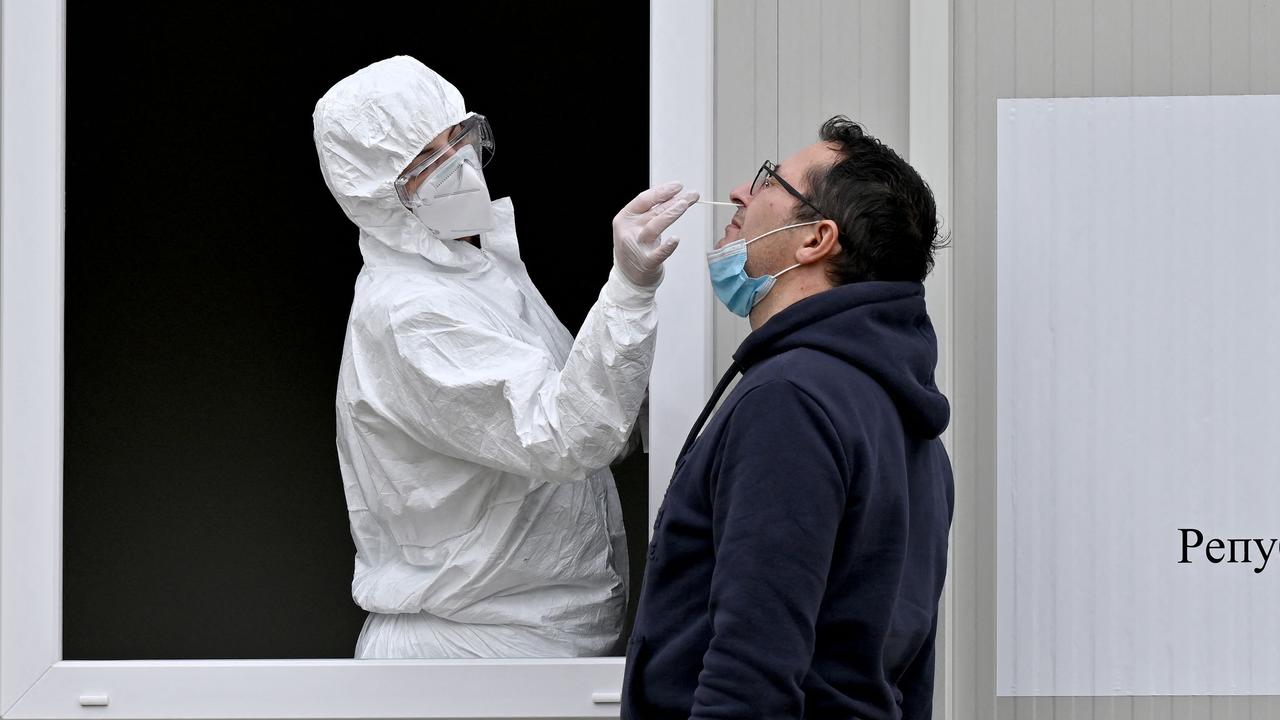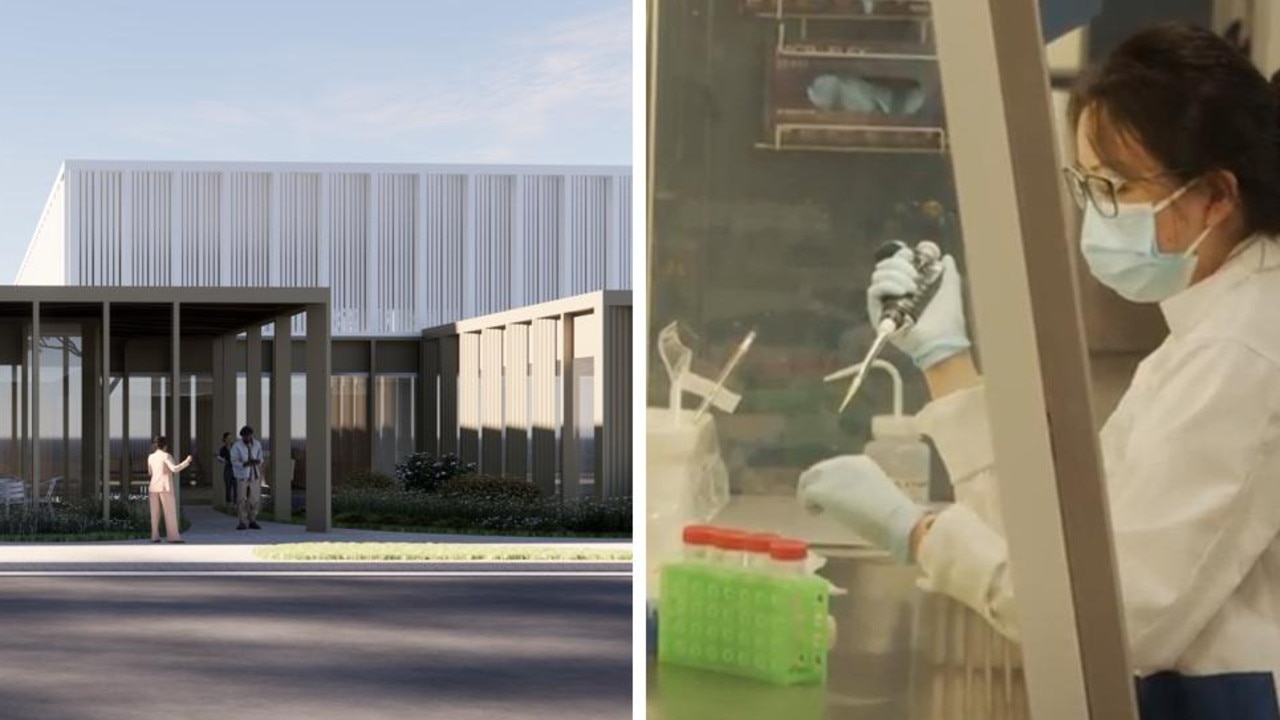Quarantine free travel to NZ to start within weeks, Jacinda Ardern confirms
Scott Morrison has reacted to Jacinda Ardern’s announcement of when the trans-Tasman bubble between Australia and New Zealand will begin.
Coronavirus
Don't miss out on the headlines from Coronavirus. Followed categories will be added to My News.
Prime Minister Scott Morrison has said he and Jacinda Ardern have had “positive” discussions about the new trans-Tasman bubble allowing unrestricted travel between Australian and New Zealand borders.
Mr Morrison said the new agreement means more planes in the air, more jobs on the ground and in the air as well for our airlines.
It also means further support for our travel agents and was a “win-win”.
“It will mean many opportunities as those normal relations are restored between Australia and New Zealand,” he said.
“And so, I very much appreciate the arrangement the New Zealand government has come
to today, we welcome them back as indeed Kiwis will be welcoming Aussies.”
The New Zealand Prime Minister confirmed the bubble would start at 11.59pm on Sunday April 18.
But while quarantine-free travel between Australia and New Zealand will start in a fortnight, she said it will not be what it was pre-COVID.
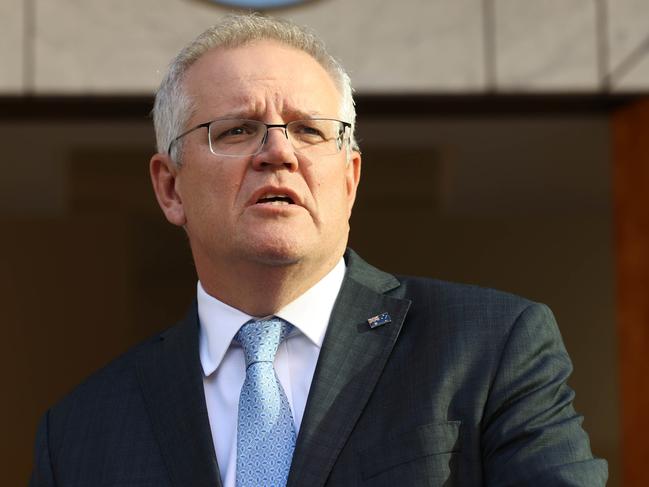
“While we absolutely wish to encourage family and friends to reunite and visitors to come and enjoy the hospitality New Zealand is ready and waiting to offer, those undertaking travel on either side of the ditch will do so ... [under] the guidance of flyer beware,” she said.
“People will need to plan for the possibility of travel being disrupted if there is an outbreak.”
She said that if there is a COVID-19 case in Australia, New Zealand will have three possible responses when it comes to flights and access to its border.
It may mean they will pause or suspend flights under a traffic light system that has three options of ‘Continue, ‘Pause’ and’Stop’.
“As you will see from the material provided, we’ve set out the types of scenarios that could lead to each response,” she said.
“They broadly follow the kinds of decisions that you’d see if there was a case here.
“For instance, if a case is found that is quite clearly linked to a border worker in a quarantine facility and is well contained, you’ll likely see travel continue in the same way as you could see life continue if that happened here in Australia.
“If, however, a case was found that was not clearly linked to the border, and a state responded by a short lockdown to identify more information, we’d likely pause flights from that state in the same way we would stop travel into and out of a region in New Zealand as if it was were going into a full lockdown.
“And if we saw multiple cases of unknown origin, we would likely suspend flights for a set period of time.”
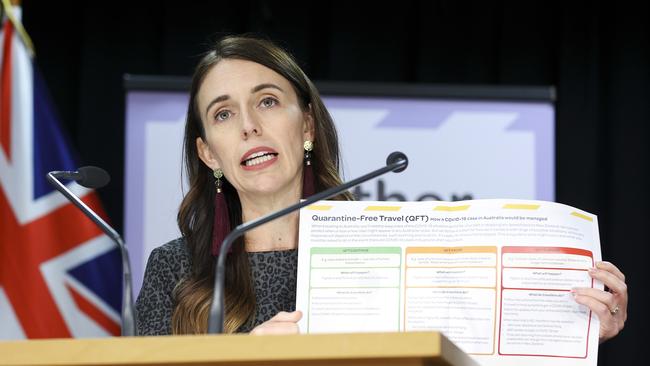
Ms Ardern said in each situation travellers in an affected state should expect two things.
“First, they must follow the guidelines locally,” she said.
“Second when travel does resume and they’re able to come to New Zealand again, they could be asked to do one of four things depending on the risk.
“Either, simply monitor their symptoms on return.
“Two, take a test before they depart. Three, isolate on arrival. Or, four, possibly, in some
situations, go into managed isolation for up to 14 days.
“These precautions are all part of our preparation to keep COVID out and, of course are not based on hypotheticals.
“Both countries have had border incursions and I know neither one of us wishes to export COVID to the other country. These protocols will help ensure that we don’t.”
Ms Ardern said she spoke with NSW premier Gladys Berejiklian and the Queensland premier Annastacia Palaszczuk today and Prime Minister Scott Morrison last night.
Under the national agreement, she said they would have flexibility to pause or suspend flights from one state.
“I think it’s fair to say that although this adds an extra layer of, you know, complication for us as we manage potential hot spots indifferent states, it also gives us a level of flexibility,” she said.
“It does mean we have the ability, if we believe it safe to do so, to potentially pause or suspend flights in one state whilst, if another state remains unaffected, continuing travel there. So that flexibility exists but we’ll be using it cautiously and wisely.”
New Zealand’s Director-General of Health will give final confirmation of any conditions of travel that may affect Queensland by next Wednesday.
When Australians make a booking a flight to New Zealand, she said they would book what will be called a “green zone flight”.
“That means there’ll be no passengers on that flight who have come from anywhere but Australia in the last 14 days,” she said.
“They will also be flown from crew who have not flown on any high-risk routes for a set period of time.
“Passengers will need to provide comprehensive information on how they can be contacted while in New Zealand. They won’t be able to travel if they have cold or flu symptoms.
“When they fly, they will be required to wear a mask on a flight and will also be asked to download and use the NZ COVID Tracer app for use in New Zealand.
“On arrival, passengers will be taken through what we call “the green zones” at the airport meaning there’ll be no contact with those arriving from other parts of the world and going into managed isolation or quarantine facilities.
“We will also be undertaking random temperature checks of those arriving as an extra precaution.
“All of that, alongside, of course, the usual welcome that we like to give those who are either our guests or are returning Aotearoa New Zealand.”
Ms Ardern said protection control audits for airports would take place over the next two weeks.
The Ministry of Health expects to have completed these and to report on them on April 16 before the bubble opens on April 19.
“If any airport is found not to be ready, they simply won’t be a part of the opening that will be occurring on 19 April,” she said.
Air New Zealand is already offering daily flights between Auckland and Sydney.
The airline is also selling flights between Auckland and Melbourne from Friday April 9.
New Zealand’s Cabinet met and signed off on the starting date.
Since October last year, travellers from NZ have been allowed to enter Australia without quarantining except for during a few short periods.
In that time over 32,000 travellers have landed in Australia, the majority of them landing in Sydney.
The announcement is be a boon to Australian ski enthusiasts looking to travel to NZ’s South Island during the winter months, but government sources speculated that the security provided by the two-way bubble would also encourage plenty of Kiwis looking to head to Australia for a bit of sunshine.
Qantas has announced it will operate up to 122 return flights per week to New Zealand once the two way travel bubble begins.
Qantas and its budget carrier Jetstar will fly all of the 13 routes in New Zealand they operated prior to Covid-19, as well as two new routes, from Auckland to Cairns and the Gold Coast.
It will also fly year-round between Melbourne and Brisbane to Queenstown, routes which previously only operated during the ski season.
The services will offer more than 52,000 seats each week.
Flexible booking policy with unlimited flight date changes will be extended to their New Zealand flights.
Qantas Domestic and International chief executive Andrew David said “restarting flights to New Zealand is about more than starting to rebuild our international network, it’s about reconnecting families and friends and getting more of our people back flying again”.
“Hopefully, stories of missed weddings and birthdays on either side of the ditch will now be a thing of the past.
“We know Australians are keen to head overseas again, so we expect strong demand for flights to New Zealand and there are many Kiwis who can’t wait for a winter escape to warmer weather in Australia.”
Qantas expects the New Zealand routes to increase its operating capacity to 83 per cent of pre-Covid levels, an increase the airline believes “reflects a high level of expected demand for what will be Australia’s only international destination for at least the next six months”.

Qantas and Jetstar have stated they will offer Frequent Flyers uncapped Classic Flight Reward seats for the first three days of travel when the two-way trans-Tasman bubble opens.
Thousands of seats across all cabins will be available to be booked as Classic Flight Rewards over the 72-hour travel period.
Customers can also pay for these seats.
Qantas Frequent Flyer will also add 50 per cent more Classic Reward seats on Qantas’ trans-Tasman flights for the remainder of the year.
Qantas Loyalty CEO Olivia Wirth said the initiative would reward the program’s Australian and New Zealand members who have continued to build their points balance during the pandemic.
“Our members have been stockpiling points during COVID for exactly these opportunities and we want to help make it easier to get on one of the first international flights,” Ms Wirth said.
“That’s why every seat on every Qantas and Jetstar flight for the first three days of the travel bubble opening will be Classic Flight Rewards.
“For the remainder of the year, there will also be more reward seats available including during peak times like Christmas and school holidays on Qantas’ trans-Tasman flights.
“Eighty per cent of Qantas Frequent Flyers have said they want to use the points they have been stockpiling on travel. This is just one example of how we’ll be making it easier for members to get closer to their next dream trip as borders reopen.”
Virgin Australia has called the New Zealand travel bubble “a step in the right direction” but it does not plan to resume flights to New Zealand until November.
A Virgin Australia spokesperson said: “We have suspended the sale of most New Zealand services until 31 October 2021. A limited schedule for flights to and from Queenstown will remain available for booking from 18 September 2021.
“We are working with Air New Zealand to provide impacted customers with alternative options and will be contacting them directly. In all cases, options to select new travel dates or obtain a refund to the original form of payment are being made available.
“New Zealand remains a key part of our short-haul international network and we look forward to re-entering the Trans-Tasman market later this year.”
Tourism New Zealand Interim Chief Executive René de Monchy said the border opening supports the recovery of New Zealand’s international tourism industry and is valuable for both nations.
“We aren’t expecting Australian visitor numbers to return to previous levels for some time, and expect the first to travel will be those reconnecting with family and friends,” he said.
“Tourism must give back more than it takes. We have a strategic marketing approach to deliver exactly that and ensure visitors have clear expectations of how to look after our home.”
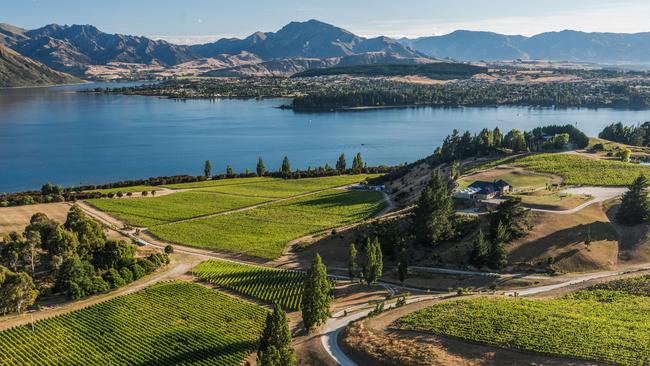
“Our research shows over half of Australians are motivated to have a holiday that includes fun and enjoyment (56 per cent) and to relax and refresh (53 per cent). This presents a great opportunity for operators and businesses to offer experiences that appeal to this.”
Prior to COVID-19, Australians made up almost 40 per cent of international arrivals to New Zealand and contributed around 24 per cent or $2.7 billion of New Zealand’s annual international visitor spend.
While many travellers were excited by the announcement, the bubble comes as the UK mulls removing its travel bans as early as the middle of May.
In contrast to Australia’s slow and problem-riddled vaccination program, the UK’s rapid rollout has already seen a 60 per cent drop in symptomatic cases and an 80 per cent fall in hospital admissions.
Rodger Cook, General Manager of Global Security Services for World Travel Protection, told News Corp that when the proposed trans-Tasman bubble opens, Australians will need to consider different risks involved.
“Particularly in service industries, collaboration and personal connection are an important ingredient of a successful operation,” he said.
“However, due to the potential risks mentioned, we expect that businesses will be very cautious with a travel bubble as the risk of a border closure is real; organisations are still likely to limit travel to urgent or essential only.”
Mr Cook said the New Zealand Government had adopted a simple framework to manage the risk of COVID-19 impacting the trans-Tasman bubble.
“This ‘continue, pause and respond’ framework is an extension of their domestic policy and will help with clarity of decision making. The risk of travelling to New Zealand is now essentially the same as travelling to any state in Australia and this approach should help to put travellers’ minds at ease,” he said.
“Prime Minster Ardern pointed out that travellers travel at their own risk and that circumstances can change. Despite this uncertainty, it is highly likely that there will be a lot of interest in the upcoming New Zealand ski season.
“The use of green zones at New Zealand airports will take some management in the three ports they are using. Australia will need to achieve the same with eight ports.”
Originally published as Quarantine free travel to NZ to start within weeks, Jacinda Ardern confirms
Read related topics:Scott Morrison


